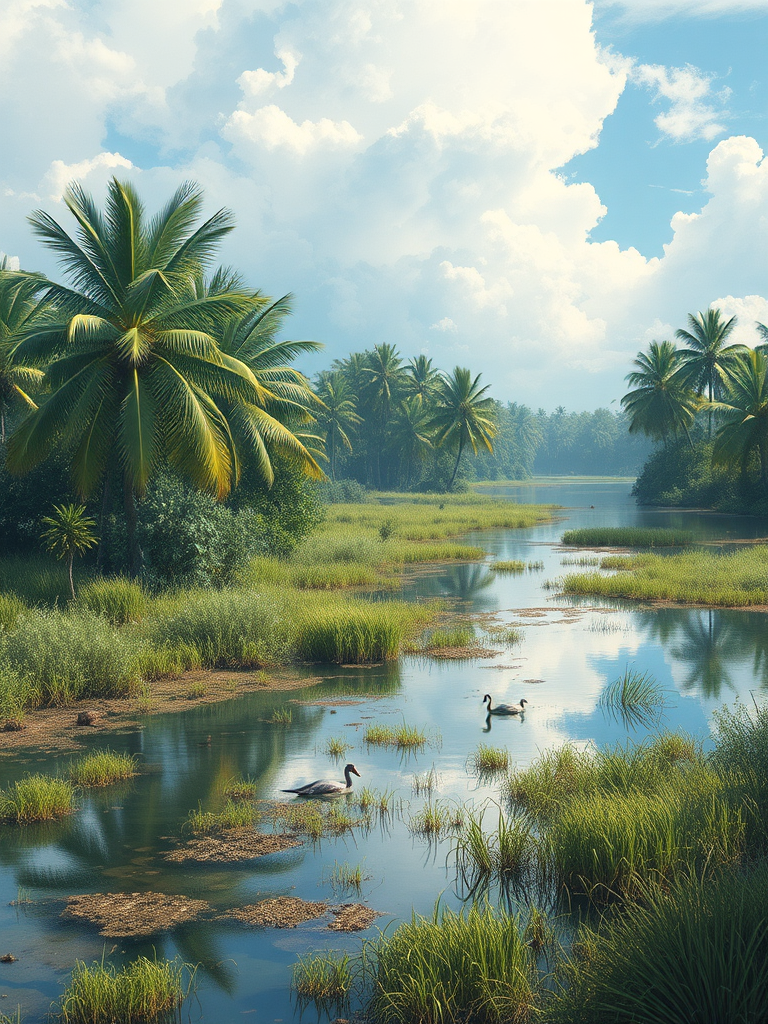Unraveling the Mysteries of the Everglades: A Spotlight on Biodiversity and Conservation Challenges
Nestled in the southern tip of Florida, the Everglades, known as the “River of Grass,” is a unique and complex ecosystem teeming with a stunning diversity of plant and animal life. The area, covering about 1.5 million acres, is not merely a swamp but a slow-moving, shallow river that plays a crucial role in the environmental health of the region.
The Everglades is recognized for its impressive biodiversity. It is home to a variety of species, from the iconic American alligator to the elusive Florida panther. Thousands of wading birds, including herons and egrets, occupy this verdant area, enchanting visitors with their grace and beauty. In addition, the Everglades is the only place in the world where alligators and crocodiles coexist, a testament to the delicate balance of its environment.
One of the most distinctive features of the Everglades is its plant life. The sawgrass marshes, which give the Everglades its nickname, are ubiquitous.
These grasses thrive in the shallow water layers, creating a seemingly endless sea of green.
However, the Everglades isn’t just grass.
It also boasts hardwood hammocks, mangrove forests, and pineland habitats, each providing a unique backdrop for the wildlife that inhabits them.
Despite its natural beauty, the Everglades face serious challenges. The gradual encroachment of human activities, including urban development and agriculture, has led to significant habitat loss and degradation.
Pollution, particularly from agricultural runoff, has also adversely impacted water quality, disrupting the complex web of life that relies on this delicate balance.
Invasive species pose an additional threat to the Everglades. Among these, the Burmese python has become particularly problematic. These large snakes, released into the wild by exotic pet owners, have established thriving populations. With no natural predators, they’ve wreaked havoc on local wildlife, significantly reducing the populations of native species.
However, today, there are concerted efforts to restore and preserve this remarkable ecosystem. These include efforts to regulate water flow, control invasive species, and rehabilitate habitats.
Public and private entities are working together to ensure the Everglades continues to thrive, maintaining its status as a global ecological treasure.

The Everglades is not just a natural wonder; it’s a living, breathing testament to the intricate balance of life. It serves as a reminder of the impact humans can have on the environment and the responsibility we share in preserving these precious ecosystems. This makes the Everglades not only an essential part of Florida’s landscape but also a significant component of global biodiversity.
The Everglades, with its abundant life and challenges, is a fascinating subject to explore. As one unravels its mysteries, it’s impossible not to be drawn into its enchanting world. It’s a place where every plant, every creature, every droplet of water tells a story – a story of resilience, adaptability, and the enduring power of nature. Each visit to this vast wilderness offers a new discovery, a new understanding of how life thrives amidst challenges – a real-life testament to the power of nature’s balance.
In an era where environmental concerns are more pressing than ever, the Everglades stands as a beacon of both the fragility of our ecosystems and the remarkable resilience of nature. By learning about and valuing the Everglades, we can truly comprehend the significance of biodiversity and the necessity of environmental preservation for the survival and flourishing of life on our planet.